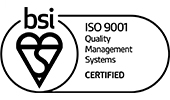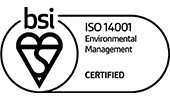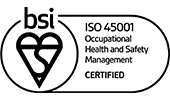This blog was inspired by two recent videos that gave us some food for thought about office automation.
Both of these videos seemingly bring us one step closer to the typically sci-fi vision of a future filled with robots and also have implications on office design and the future of the workplace.
Musical chairs
The first involved Nissan having a bit of fun in the workplace with some self-parking chairs. Inspired by the technology from their self-parking cars, clearing up the office after a hard day’s work could be a thing of the past. Able to turn 360 degrees, they can locate a target position with the help of four cameras in the room and wirelessly transmit a route that returns the chairs to their original positions.
Chairs controlled by Wi-Fi and motion cameras…. very clever! https://t.co/4AlV0Cn4dX #workplaces #furniture #tech pic.twitter.com/A2Y6o4PsY2
— Paramount Interiors (@Paramount_Int) February 16, 2016
Quirkily creative, this small amount of automation in the office can at least be seen to benefit the human occupants of an office. However, a series for BBC News called Intelligent Machines highlights some other advances in technology that could actually pose a threat to the careers of some individuals.
The robots are coming

Image: UNLV Photo Services
Earlier this year (January 2016), the BBC reported from the World Economic Forum in Davos, highlighting what they called the fourth industrial revolution, it included the presentation of Hubo from South Korea, a walking humanoid robot.
The existence of Hubo, as well as the series of impressively dexterous robots being created by Boston Dynamics, has made the automation of the office pretty much inevitable. With self-driving cars about to hit the streets, intelligent personal assistants like Apple’s Siri, Google Now and Cortana from Microsoft already sitting in our pockets, the number of jobs that could be done more efficiently by a machine are increasing every day.
A study from Oxford University has suggested that 35% of existing UK jobs are at risk of automation in the next 20 years. You can even find out if your current job is at risk on this interactive graphic.
However, over the next few years the “robots” that may start to make an appearance in the workplace probably won’t look like the Terminator or C3PO from Star Wars. They’re far more likely to make their presence felt as artificial intelligence in the furniture and accessories that we currently use every day.
The office of the internet of everything
While workplaces may very well include the kind of gyroscopic telepresence “robots” that we mentioned in our last piece about the office of the future, it’s more likely that you’ll be sitting in, working on and interacting with intelligent devices and office furniture.
This will undoubtedly have implications on the way that a workplace is designed. Floor surfaces may need to accommodate the two wheels of the “iPad-on-wheels” style robots that allow remote workers to communicate with staff in the office. So more slopes and less stairs might be the answer. As well as self-parking chairs, you could start to see shapeshifting furniture like Transform. Created in the MIT Media Lab by Professor Hiroshi Ishii and the Tangible Media Group, more than 1,000 pins move up and down in response to sensors that capture the kinetic energy of the person using it.
It may not be as fine-tuned as it could be, Jon in our Design team noted frustratingly that the pegs aren’t quite flush with each other, but it certainly opens up new ways for staff to use their work station. In the interactive office of the future a hot desk could instantly reconfigure to your own needs as soon as you approach it.
Welcome to the automated office of 2030
UK Internet service provider, Plusnet, interviewed 12 futurists and office design experts about how the office might have changed by 2030.

©Plusnet PLC 2016
Predictions included holographic receptionists, biometric entry systems using fingerprint scanning or iris identification and flexible nanotechnology that can morph a space into any form you choose. Artificial intelligence will be integrated into every service, feature and fitting within the office, with 3D holograms and telepresence robots replacing static video conferencing. Nanopaint on the surface of walls, ceilings and objects will transform entire rooms into a visual display for information and in the kitchen or canteen 3D food printers will prepare snacks at the touch of a button. Toilets will not only recycle waste but also diagnose medical conditions and areas for privacy will expand to include nap spaces and yoga rooms for de-stressing, as well as virtual reality gaming rooms and perhaps an office slide or two between floors. The trend of biophilia, bringing the bond between people and the natural world to the forefront of design, will continue, with offices having their own roof gardens or areas where plants and vegetables can be grown.
Social intelligence, not artificial
It’s a given that the workplace will change dramatically in the years to come and automation will undoubtedly have its part to play in this, but it’s important to note that, rather than dehumanising the office, this could help to foster a workplace that puts a lot more importance on social intelligence.
A report published by King’s College London in partnership with the National Citizen Service (NCS) found that in our technology-reliant and connected world, the use of social media by teenagers may actually boost their social intelligence; the ability to make friends and interact with others.
Spending more time online actually meant that they were better able to make friendships in person, supporting the development of social skills. However, the report also suggested that it didn’t encourage integration with people from different backgrounds, making them nervous to socialise outside of their own social groups.
The report spoke to more than 200 employers, who all cited social intelligence as a vital element when recruiting new staff. This Guardian article highlights the fact that human interaction and social skills will play an important part in the next generation getting the job they want in the office of the future.
The robots may not be coming to steal all of our jobs just yet, but we need to start thinking about how we design the office of the future today. It’s not just about cutting-edge interactive furniture and VR headsets, it’s also about producing a creative, collaborative, social space where people can do what robots will never be able to; interact, share ideas and enjoy their job.








